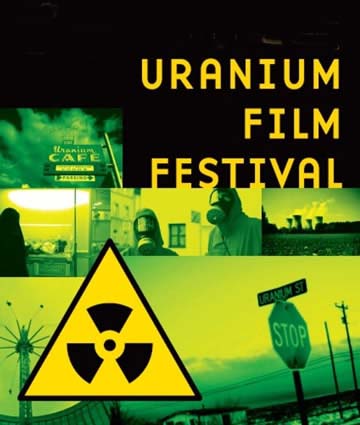US Gov’t Headline: Alaska island “appears to show impacts from Fukushima” — “Significant cesium isotope signature” detected — Scientists anticipate more marine life to be impacted as ocean plume arrives (VIDEO)
http://enenews.com/us-govt-headline-alaska-island-appears-to-show-impacts-from-fukushima-significant-cesium-isotope-signature-detected-video
Published: November 14th, 2013 at 1:22 am ET
By ENENews
Amchitka Island, Alaska, Biological Monitoring Report 2011 Sampling Results, September 2013: To determine what [Fukushima Dai-ichi’s] direct release of radioactive materials into the atmosphere might have contributed to the background radiation on Amchitka and Adak Islands, semiquantitative gamma spectrometry measurements were made […] The results imply that Dolly Varden [a type of fish], rockweed, and to a lesser extent, Irish lord [a type of fish] appear to contain a significant cesium isotope signature from Fukushima Dai-ichi. The estimated 134Cs/137Cs activity ratios in pooled fauna samples at the time sampled ranged from <30 to about 60 percent. Observations of Fukushima-derived fallout impacting on this region are supported by findings of elevated levels of 134Cs (and 137Cs) in lichen and soil collected from both the Adak and Amchitka regions. […]

Lichen sample from mid-2011 expressed in picocuries/kilogram — Lichen on the island had less than 70 pCi/kg of Cs-137 in 1997.
Department of Energy: Biological Monitoring at Amchitka Appears to Show Impacts from Fukushima Dai-ichi Incident […] The U.S. Department of Energy Office Legacy Management (LM) has a long-term stewardship mission to protect human health and the environment from the legacy of underground nuclear testing conducted at Amchitka Island, Alaska, from 1965 to 1971. […] Atmospheric monitoring in the United States showed elevated cesium activities shortly after the [Fukushima] nuclear incident. LM scientists anticipated that atmospheric transport of cesium would potentially increase the cesium activities in the 2011 biological samples collected near Amchitka. Because cesium-134 has a relatively short half-life of 2 years and indicates leakage from a nuclear reactor, it is a clear indicator of a recent nuclear accident […] Because the Amchitka 2011 sampling event occurred soon after the Fukushima nuclear accident, the biota impacted by atmospheric precipitation showed the greatest impact (e.g., species that live in freshwater or shallow ocean waters) when compared to marine biota living in deeper water. This is because ocean currents are a slower transport process than wind currents. LM scientists anticipate that the marine biota will show the impacts of Fukushima during the next sampling event, currently scheduled to occur in 2016. […]
Watch the DoE video describing the 2011 monitoring event here
From enenews comments h/t Mack
FYI – Here are the greatest amounts of radioisotopes found at one testing site (dry detection):
* Cesium-137 — 3.854 pCi/kg in Dolly Varden fish
* Cesium-137 — 5.312 pCi/kg in goose Egg no shell
* Cesium-137 — 5.199 pCi/kg Gull egg
* Cesium-137 — 8.094 pCi/kg Chiton
* Cesium-137 — 4.981 pCi/kg Dragon Kelp
* Cesium-137 — 2.365 pCi/kg Rockweed
* Cesium-137 — 13.254 pCi/kg Greenling
* Cesium-137 — .384 pCi/kg Halibut
* Cesium-137 — 125.381 pCi/kg Horse Mussel soft tissue
* Cesium-137 — 15.505 pCi/kg Irish Lord
* Cesium-137 — 1.425 pCi/kg Octopus
* Cesium-137 — .995 pCi/kg Pacific Cod
* Cesium-137 — 10.216 pCi/kg Rockfish
* Cesium-137 — 16.749 pCi/kg Sea Urchin
* Cesium-137 — 25.254 pCi/kg Reindeer Lichen
* Americium-241 — .008 pCi/kg Dolly Varden
* Americium-241 — .106 pCi/kg Goose Egg no shell
* Americium-241 — .05 pCi/kg Chiton
* Americium-241 — .024 pCi/kg Dragon Kelp
* Americium-241 — .024 pCi/kg Rockweed
* Americium-241 — .098 pCi/kg Greeling
* Americium-241 — .008 pCi/kg Halibut
* Americium-241 — 1.678 pCi/kg Horse Mussel tissue
* Americium-241 — .11 pCi/kg Irish Lord
* Americium-241 — .003 pCi/kg Octopus
* Americium-241 — .01 pCi/kg Pacific Cod
* Americium-241 — .085 pCi/kg Rockfish
* Americium-241 — .091 pCi/kg Reindeer Lichen
* Americium-241 — .02 pCi/kg Sea Urchin
* Plutonium-239 — .039 pCi/kg Dolly Varden
* Plutonium-239 — .186 pCi/kg Goose Egg no shell
* Plutonium-239 — .104 pCi/kg Gull egg
* Plutonium-239 — .298 pCi/kg Chiton
* Plutonium-239 — .093 pCi/kg Dragon Kelp
* Plutonium-239 — .084 pCi/kg Rockweed
* Plutonium-239 — .379 pCi/kg Greeling
* Plutonium-239 — .038 pCi/kg Halibut
* Plutonium-239 — 4.194 pCi/kg Horse Mussel tissue
* Plutonium-239 — .378 pCi/kg Irish Lord
* Plutonium-239 — .036 pCi/kg Octopus
* Plutonium-239 — .05 pCi/kg Pacific Cod
* Plutonium-239 — .279 pCi/kg Rockfish
* Plutonium-239 — .152 pCi/kg Reindeer Lichen
* Plutonium-239 — .195 pCi/kg Sea Urchin
* Plutonium-240 — .039 pCi/kg Dolly Varden
* Plutonium-240 — .106 pCi/kg Goose Egg no shell
* Plutonium-240 — .069 pCi/kg Gull egg
* Plutonium-240 — .149 pCi/kg Chiton
* Plutonium-240 — .037 pCi/kg Dragon Kelp
* Plutonium-240 — .02 pCi/kg Rockweed
* Plutonium-240 — .189 pCi/kg Greeling
* Plutonium-240 — .012 pCi/kg Halibut
* Plutonium-240 — 2.097 pCi/kg Horse Mussel tissue
* Plutonium-240 — .189 pCi/kg Irish Lord
* Plutonium-240 — .021 pCi/kg Octopus
* Plutonium-240 — .015 pCi/kg Pacific Cod
* Plutonium-240 — .139 pCi/kg Rockfish
* Plutonium-240 — .091 pCi/kg Reindeer Lichen
* Plutonium-240 — .117 pCi/kg Sea Urchin
* Uranium-234 — 3.854 pCi/kg Dolly Varden
* Uranium-234 — 5.312 pCi/kg Goose Egg no shell
* Uranium-234 — 3.466 Ci/kg Gull egg
* Uranium-234 — 4.96 pCi/kg Chiton
* Uranium-234 — 9.344 pCi/kg Dragon Kelp
* Uranium-234 — 7.885 pCi/kg Rockweed
* Uranium-234 — 4.906 pCi/kg Greenling
* Uranium-234 — 2.304 pCi/kg Halibut
* Uranium-234 — 58.721 pCi/kg Horse Mussel tissue
* Uranium-234 — 8.86 pCi/kg Irish Lord
* Uranium-234 — 7.127 pCi/kg Octopus
* Uranium-234 — 4.976 pCi/kg Pacific Cod
* Uranium-234 — 4.644 pCi/kg Rockfish
* Uranium-234 — 3.032 pCi/kg Reindeer Lichen
* Uranium-234 — 3.906 pCi/kg Sea Urchin
They also found Uranium-235, 236 and 238 in these items. Starts on Page 247.
>> You can see how these radioisotopes can add up very quickly if you’re eating the fish.
……………………………………………………………………………………
And from Mary M….
In this report, it appears that the Plutonium detected was actually NOT more in 2011 compared to their testing in 2004.
Cesium 137, Uranium 234 and Uranium 236 levels were higher/more in 2011 (pg55).
Maybe there’s something I’m missing, but this area was definitely a hot spot before, so it is not all related to Fukushima. Does anyone read the Plutonium part differently?
No comments yet.
-
Archives
- May 2024 (12)
- April 2024 (367)
- March 2024 (335)
- February 2024 (345)
- January 2024 (375)
- December 2023 (333)
- November 2023 (342)
- October 2023 (366)
- September 2023 (353)
- August 2023 (356)
- July 2023 (362)
- June 2023 (324)
-
Categories
- 1
- 1 NUCLEAR ISSUES
- business and costs
- climate change
- culture and arts
- ENERGY
- environment
- health
- history
- indigenous issues
- Legal
- marketing of nuclear
- media
- opposition to nuclear
- PERSONAL STORIES
- politics
- politics international
- Religion and ethics
- safety
- secrets,lies and civil liberties
- spinbuster
- technology
- Uranium
- wastes
- weapons and war
- Women
- 2 WORLD
- ACTION
- AFRICA
- Atrocities
- AUSTRALIA
- Christina's notes
- Christina's themes
- culture and arts
- Fuk 2022
- Fuk 2023
- Fukushima 2017
- Fukushima 2018
- fukushima 2019
- Fukushima 2020
- Fukushima 2021
- general
- global warming
- Humour (God we need it)
- Nuclear
- RARE EARTHS
- Reference
- resources – print
- Resources -audiovicual
- World
- World Nuclear
- YouTube
-
RSS
Entries RSS
Comments RSS




Leave a comment